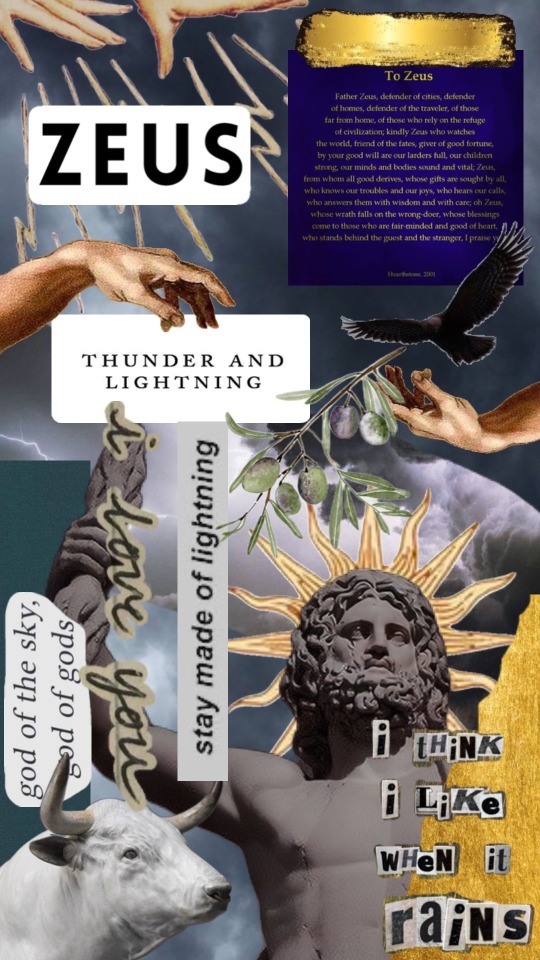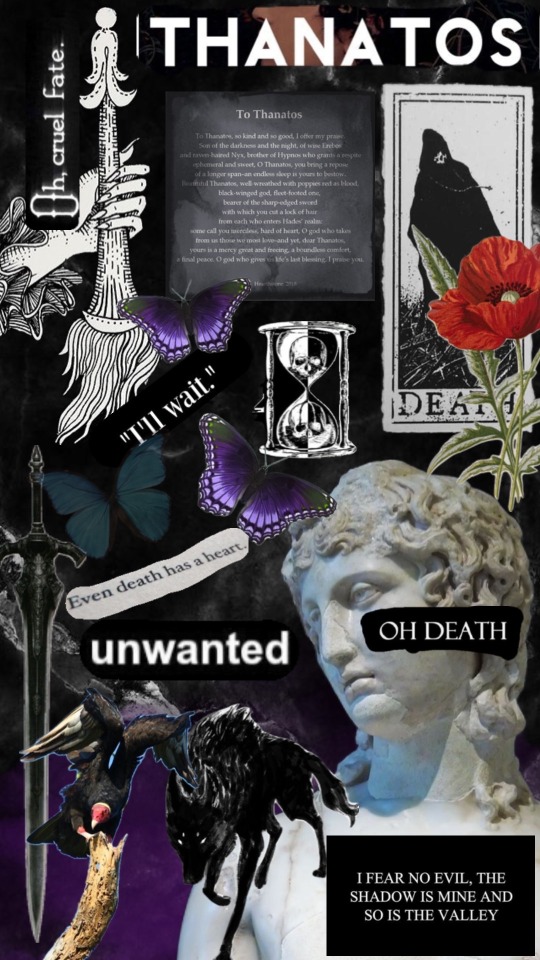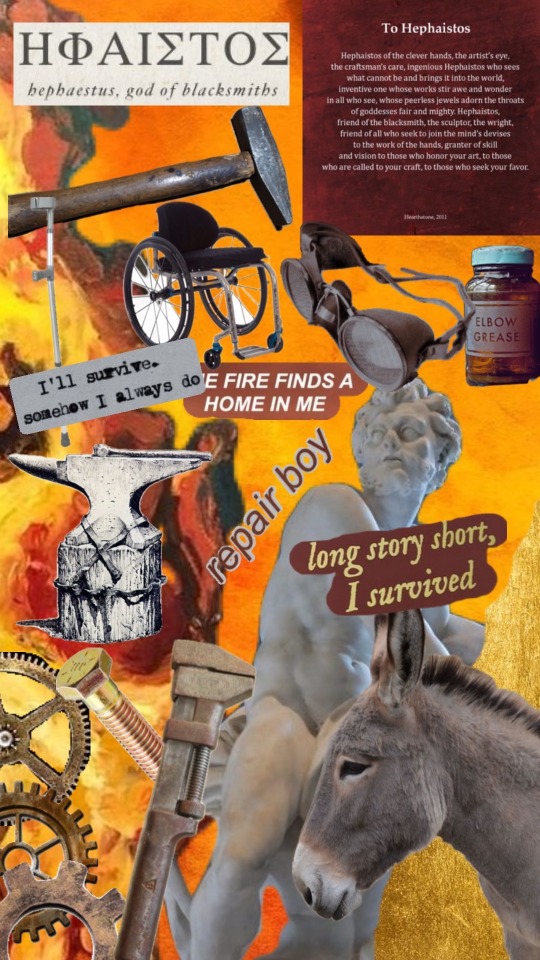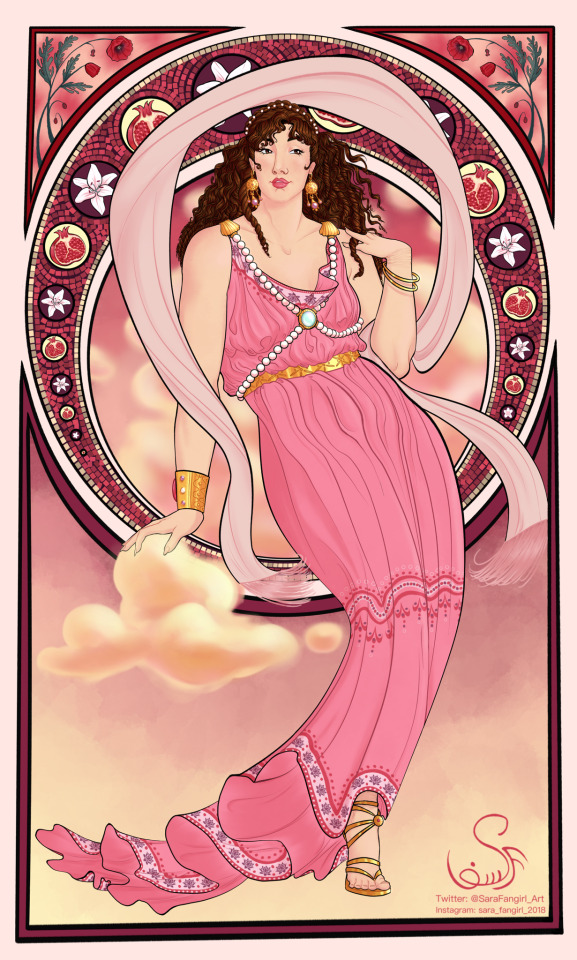#zeus deity
Text
When you step into sunlight, you honor Apollo. When you admire the moon, you honor Artemis. When you admire cloud shapes, you honor Hera. When you smell petrichor, you honor Zeus. When you laugh at a joke, you honor Hermes. When your body twitches to dance at a particularly upbeat music, you honor Dinoysus. When you enjoy the first bite of your breakfast, you honor Demeter. When you choose your peace over any conflict, you honor Athena. When you warm yourself up by sheltering yourself in blanket, you honor Hestia. When you listen to Ocean sounds, you honor Poseidon. When you smell flowers, you honor Persephone. When you admire the coolness of first day of Autumn, you honor Hades. When you wear your favourite jewellery, you honor Hephaestus. When you smile, you honor Aphrodite. When you exercise, you honor Ares. When you light a torch in a dark room, you honor Hekate.
Your body is a shrine to Gods, your being an act of devotion for them. You, by yourself, are enough for them.
#hellenic polytheism#apollo deity#aphrodite deity#hellenic worship#hellenic deities#hellenic devotion#hellenic pagan#hellenic pantheon#hermes deity#dionysus deity#demeter deity#zeus deity#hera deity#hephaestus deity#ares deity#poseidon deity#hestia deity#artemis deity#athena deity#hekate deity#hades deity#persephone deity#hellenic gods#hellenic polytheist#hellenic paganism#hellenic polythiest#goddess aphrodite#goddess persephone#goddess hecate#hecate deity
3K notes
·
View notes
Text
It’s odd how Athena is Zeus’s favorite but she doesn’t seem to like him back, not only did she participate in Hera’s coup against him but even in the Iliad she was upset with him.
#she obeys him sure but only bc he’s stronger than her not bc he’s her father#greek mythology#greek pantheon#ancient greek mythology#greek goddess#zeus#athena goddess of wisdom#athena goddess#athena#metis#anti zeus#zeus deity
3K notes
·
View notes
Text
a tip for beginners since it worried me when i first started: its important to note that while there are deities that are heavily connected to each other, you’re not obligated to work with both of them.
many people speak on specifically married deities (ex: hades & persephone, zeus & hera, odin & frigg). a lot of people refer to them as a “package deal” since they are heavily entwined. but it’s important for those just starting out, this does not mean you have to work with both.
as someone who works with hades, some of my offerings to him are related to persephone but i don’t worship her. in fact, when i had the opportunity to meet her and ask, she smiled and said, “you’re not mine”. we both mutually understood that we didn’t have a connection to one another but we have mutual respect and kindness for one another.
the “package deal” part is where i offer my coffee that is too sweet for hades so he said he’ll hand it to persephone instead. which is the cutest fucking thing btw omg
this is all just in an effort to say, please do not worry about having to work with two deities rather than one. don’t get overwhelmed.
#as a side note: persephone is so unbelievably gorgeous good god she’s beautiful#paganism#deity worship#deity work#norse paganism#hellenic pagan#hellenic polytheism#hades deity#persephone deity#hera deity#zeus deity#odin deity#frigg deity#baby witch
456 notes
·
View notes
Text
In my Zeus devotee era

#hellenic polythiest#hellenic polytheism#hellenic community#hellenic religion#hellenic worship#greek mythology#hellenismos#hellenic reconstructionism#deity communication#zeus deity#zeus devotee#zeus#hellenic altar
389 notes
·
View notes
Text
Dissecting ancient Greek wedding customs (or “How to adapt the clusterfuck they are into something somewhat doable for the 21st century”)
This post is going to be a bit different. I could stick to writing about the customs we know of from a purely historical perspective, and while it would be informative, it wouldn’t reflect what I’ve actually been up to. Some of you might already know, but I’m getting married, so I approached this topic with the intent of seeing what I could do (and get away with).
So this post is going to be more about method and the practical challenges that come with doing the groundwork of adapting very old (and often outdated) traditions in a way that makes sense for our modern times.
I do have some disclaimers to make before I get started:
Most (if not all) of the literature around ancient Greek marriage is hetero-normative. However, this does NOT mean that marriage rites shouldn’t be adapted for queer marriages or that queer marriages can’t be done within Hellenic paganism. It’s our job as reconstructionists and revivalists to rework and adapt to our needs.
Similarly, this post is bound to mention or detail cult practices that are no longer in line with our modern sensibilities. I also want to make it clear that this post is not a tutorial. I’m not saying how things should be done, I’m only exposing elements that I consider reworkable and propose suggestions so that it can help others make their own research and decisions, with the level of historicity that they deem fit.
While the wedding customs from fifth century BC Athens are decently known, the ones from other cities and regions of Greece are much more obscure outside of anecdotal and fragmentary details (with the exception of Sparta). For this reason, the Athenian example is what I’ll be using as foundation. If you reconstruct practices from other areas of the Greek World, you might find something valuable in this article: The Greek Wedding Outside of Athens and Sparta: The Evidence from Ancient Texts by Katia Margariti.
Basic/simplified structure
The typical Athenian wedding would spread over three days, and be marked by several steps, some of which are listed below. Note that the order of these steps is not precisely known and might have been flexible:
Pre-wedding:
Decorating: korythale at the door, decoration of the nuptial bedroom
The Proteleia
Filling of the loutrophoros
Wedding day
Nuptial bath
Adornment of the bride
Wedding Feast
Hymenaios
Anakalypteria
Nymphagogia
Katachysmata
Day after
Epaulia
Gamelia
Final sacrifices
Some of these steps included specific customs and traditions, not all of which are reconstructible for various reasons.
Decorations
The korythale: the korythale was a sprig, usually from an olive tree (or laurel), which was placed at the groom’s door (and perhaps the bride’s too). The word in interpreted as deriving from “koros” and “thallein”, which would translate “youth-blossom”.
The korythale is very reminiscent of the eiresione, which was a similar kind of branch of laurel used during the Thargelia and/or the Pyanepsia that had apotropaic purposes. Athenian weddings included a procession from the bride’s home to the groom’s house, so the presence of the korythale at the doors would indicate that a wedding was taking place involving the decorated homes.
While I haven’t seen any one make this interpretation, I would still be tempted to argue that decorating the thresholds of houses has a similar protective and luck-bringing purpose than the eiresione, which was also hung above the door of Athenian houses.
The thalamos (nuptial bedroom): While there is no doubt the houses were properly decorated for the occasion, we have mention of special care given to the nuptial bedroom.
It’s important to understand that the procession from the bride’s house to the groom’s went up to the bedroom door, it was generally an important location and its preparation is seen represented on ancient pottery. Euripides mentions the adornment of the bed with fine fabrics, while Theocritus mentions the smell of myrrh (sacred to Aphrodite). There is also evidence that, in the Imperial period, the practice of hanging curtains to create a canopy above the bed was adopted, very likely from Egypt.
When it comes to adapting this today, it is pretty straightforward and there is plenty of room for personalization. The korythale could be challenging depending on how easily available olive or laurel are in your area. I would also argue that the custom could be more loosely adapted so that instead of being at the houses’ doors, it could take the form of a floral arrangement at the door of whatever venue you are using.
Proteleia
In short, the proteleia refers to sacrifices and offerings that would be made to various gods before the wedding. The exact timing of these is more or less unknown, but we have reasons to believe they could be done a day or a few days before the wedding, and perhaps also on the day of the wedding. These offerings were made independently by each family.
It is in this context that the offering of a lock of hair and of childhood items is best known for brides. The recipients of the offerings are varied: In Athens the most mentioned are the Nymphs and Artemis, but various sacrifices to Aphrodite, Hera, Athena and Zeus were also performed. In other parts of Greece, pre-nuptial customs often included sacrifices to local heroines. Plutarch, in the 2nd century AD (and therefore way after the focus of this post) mentions the main five nuptial deities to be Zeus Teleios, Hera Teleia, Aphrodite, Peitho and Artemis.
Today, I believe the exact choice of who to offer to and what to offer very much comes down to personal preferences and circumstances. While we assume that both families made prenuptial sacrifices, we know very little of the groom’s side of things, since the focus was on the bride, and the rite of passage aspect was not present for the groom in Ancient times. This is a gap that leaves room for modern innovation eg. including Apollon to either replace or accompany Artemis or choosing a group of deities that is more couple-centric rather than family-centric.
Personally, I have settled on Aphrodite, Hera and Artemis and have integrated a Spartan custom that includes the mother of the bride in the sacrifice to Aphrodite. Hera Teleia will receive a lock of my current hair, while Artemis will receive a lock of hair from my first haircut as a child (that my mother has kept all these years), alongside some other trinkets. The groom will honour Zeus Teleios in a passive way. And I will honour the Nymphs through the the rite I will explain next.
Nuptial baths
Both bride and groom had a ritual bath before the wedding. Its purpose was of cleansing and purificatory nature, and is consistent with other water-based pre-sacrifice purifications. What made the bride and groom's baths distinctive was their preparation. The bath water used to be drawn at a specific spring or river. At Athens, the water for bridal baths came from the Enneakrounos, the fountain house for the spring Kallirrhoe, but each city had its dedicated source. The water was carried in a special vase named the loutrophoros (bathcarrier) and the act of fetching the water and bringing it back to the homes constituted a procession. The loutrophoros was often given as offering to the altar of the Nymphs after the wedding. It was an important symbol of marriage, to the point that, if a woman died before being married, she would often be buried with a loutrophoros.
This will be more or less difficult to adapt depending on circumstances and environment, but the logic of a purifying bath (or shower even) can be kept (though I would discourage bathing in water you are not sure of the cleanliness of). The idea of having a specific vessel can also be kept. Personally, I plan to have a special vessel for some type of purified water, and while I may not bathe in it, I plan to sprinkle it and/or wash my hands with it.

Adornment of the bride (and groom)
Traditionally, the bride would have a nympheutria (which we could equate as a bridesmaid, but seems to have often been a female relative) charged of helping the bride get ready. I won’t get into the details of the clothing we know about, mostly because there seems to be a lot of variation, and because I consider this to be a very personal choice. However, we can note that both groom and bride were adorned with a wreath or a garland of plants that were considered to have powers appropriate for the occasion (sesame, mint, plants that were generally considered fertile or aphrodisiac). Perfume is also something attested for both bride and groom, especially the scent of myrrh. The bride would wear a crown, the stephane, which could be made out of metal or be vegetal (the stephane is now the object of its own crowning ceremony in Greek Orthodox weddings). The bride’s shoes were also particular for the event, and named nymphides. The bride’s veil was placed above the crown.
Hymenaios and Feast
I am grouping these two since they are linked. The feast was more or less the peak of the wedding ceremony and lively with music and dances, as Plutarch indicates (Moralia, [Quaest. conv.] 666f-67a):
But a wedding feast is given away by the loud cries of the Hymenaios and the torch and the pipes, things that Homer says are admired and watched even by women who stand at their doors.
The hymenaios was a sung hymn in honour of the couple and the wedding, and there were other songs that were specifically sung at weddings. However the hymenaios wasn’t only for the feast, these songs would be sung also during the processions. The hymenaios also had the purpose of ritually blessing the couple, a ritual that bore the name of makarismos.
As for the feast, it was obviously abundant with food and the prenuptial sacrifices provided the meat that would be served. There is otherwise very little difference with what a modern wedding feast would be like: food, drink, music and dance around which gathered friends and relatives of the couple. Like today, the wedding cake(s) was an important part of the celebration. It was called sesame and consisted of sesame seeds, ground and mixed with honey and formed into cakes to be shared with the guests.
Anakalypteria
Note that there is a bit of a debate around this step, which is the unveiling of the bride. Some believe the bride kept her face veiled until this part of the wedding, where her face would be uncovered for the groom to see. Others interpret this step the other way around, where the bride is then veiled as a result of being now married. The timing of the unveiling is also up for the debate. It might have been during the feast (at nightfall), or after once the couple was escorted to the bridal chamber. There doesn’t seem to be a clear consensus.
The concept of unveiling the bride is otherwise something that isn’t unknown to us as a modern audience. As with everything else, how to interpret and modernize it is up to personal preference.
Nymphagogia and Katachysmata
The nymphagogia aka the act of “leading the bride to her new home” took place at night, likely after the feast. It is at this point that the groom ritually led the bride to his home by taking her by the wrist in a ritual gesture known as χεῖρ’ ἐπὶ καρπῷ (cheir’ epi karpo). The relatives and friends of the couple formed a festive procession that accompanied them to their new home accompanied by music and songs. The mother of the bride led the procession carrying lit torches, while the groom’s mother awaited for the new couple in their home, also bearing lit torches.
Once there, the rite of the katachysmata would happen. The couple would be sat near the hearth and the guests would pour dried fruits, figs and nuts over the bride and groom as a way to incorporate them into the household and bless the union with prosperity and fertility. As part of this rite, the bride ate a fruit (either an apple, quince or pomegranate). It is only after this step that the couple would be escorted to the bridal chamber.
These two rites are tricky to adapt in a modern context because of how location-specific they are (and that’s not even taking into account the implications of having family escort you to your bedroom etc). My take would be that the katachysmata is not too far off from the custom of throwing rice/flowers at the couple after the ceremony, and could probably be incorporated as such. The torches could also be replaced by any source of light placed in a meaningful location, depending on the where the wedding is being held. The nymphagogia could also do with an update, the easiest of which could simply be holding hands while leaving the wedding ceremony.
The day after (Epaulia, Gamelia & sacrifice)
The epaulia refers to wedding gifts to the couple, which would be given the day following the ceremony. At this point, it is implied that the couple has consummated their marriage and are officially newly-weds. Pausanias informs us that the term “epaulia” (also?) refers to the gifts brought by the bride’s father in particular and included the dowry.
After the epaulia, the bride's incorporation into her husband's house was complete. This might have been when the groom held a feast for his phratria (aka direct family), as a way to conclude the wedding.
As for final sacrifices, the bride herself may have marked the end of her wedding by dedicating her loutrophoros at the sanctuary of Nymphe, south of the Acropolis.
The epaulia could be adapted, in modern terms, with having a registry. Should someone choose to have a specific vessel linked to the ritual bath today, it could very well be kept, dedicated to the Nymphs and used as a small shrine. Considering how symbolic the object is, there is also room for it to become a piece of family heirloom.
Final words
This is really only a small summary of what a wedding could have looked like, sprinkled with a few ideas of how to manage the gaps, discrepancies and limitations. As I said in my introductions, there are details I haven’t mentioned. Some of the customs detailed here have clear modern counterparts, but others don’t. I’d like to conclude by addressing these.
First, the ancient Greek (Athenian) wedding is completely devoid of priestly participation. It was entirely planned, organized and led by the two families. Religious responsibilities were entirely self-managed. I find this point important to remember because it makes it much more accessible than if modern Hellenic pagans had to seek out an external authority.
Some of you might have noticed the absence of wedding vows, at least in a formal form like the one we are used to in our modern days (derived from Christian and Jewish traditions), this is not an oversight, there simply were none that we know of. As a sidenote, I would also advise against turning a wedding vow into a formal oath. I’m still debating on what to do myself, but I’m leaning towards a religiously non-binding vow that won’t curse me should things go wrong.
Adapting the structures and rites of the ancient wedding to today’s framework of ceremony will naturally lead to changing the order of things, on top of sacrificing elements for the sake of simplicity, practicality, personal preferences and, very likely, visibility. Unless you’re lucky enough to do a private elopement, chances are that relatives and friends might be there, and not all might know or even approve of your faith. I hope this post shows that there can be ways to include traditional religious elements that will go unnoticed to the untrained eye, like I hope it showed that the private nature of the ancient Greek wedding rites is a significant advantage for modernization.
#hellenic polytheism#hellenic paganism#hellenic pagan#heradeity#greek history#ancient greece#zeus deity#aphrodite deity#artemis deity#hellenic reconstructionism#wedding rites
739 notes
·
View notes
Text
There are only two guarantees in life:
Death
People are going to be assholes on any positive Zeus and/or Hera post
#zeus and hera#zeus deity#zeusdeity#Zeus#hera deity#heradeity#Hera#greek mythology#hellenic polytheism
217 notes
·
View notes
Text
I made these to help me get back into things!!!
(They were made on shuffles)










#hellenic polytheism#helpol#hellenic pagan#hellenic pantheon#hellenic paganism#zeus deity#hellenic gods#poseidon deity#hades deity#hypnos deity#thanatos deity#hephaestus deity#ares deity#apollo deity#asklepios deity#dionysus deity
350 notes
·
View notes
Text
wow, Zeus really feels like a proud father encouraging you to continue walking down the path you've decided to choose
#zeus#my experience#paganism#paganblr#deity worship#hellenic polytheism#helpol#zeus deity#hellenic polythiest#hellenic pagan#hellenism
195 notes
·
View notes
Text
I hear Hermes in the noise of a train when it stops in front of my platform.
I hear Apollo in the loud bass line in a song.
I hear Poseidon in the snorting of horses as they go past a car.
I hear Dionysus in the laughter coming from the bars.
I hear Ares in the noises of pride parades and protests.
#ik its not all of the gods but these are the ones I primarily worship atm#the theoi are all around you if you stop and listen#pagan#hellenic polythiest#helpol#hellenic pagan#hellenic polytheism#dionysus#apollo deity#apollo#dionysus deity#ares#ares deity#hermes#hermes deity#father zeus#zeus#zeus deity#poseidon#poseidon deity#hellenic polytheist#hellenic paganism#hellenic deities#hellenic gods#hellenic polytheistic#hellenic pantheon#hellenic worship#paganism#paganblr
305 notes
·
View notes
Text
I adore how people think Hera is a poor, pitiful, victim of Zeus, but when it comes to actual interactions and worship, she will not demand honor for only herself, but also for her husband as well. Zeus and Hera are a package deal!
#pagan#paganism#hellenic deities#hellenic devotion#hellenic pagan#hellenism#hellenic polythiest#hellenic community#hellenic gods#hera#zeus#zeus deity#hera deity#hera devotee#zeus devotee
266 notes
·
View notes
Text

Hera seducing Zeus
Based on the scene in the Iliad book 14. I followed how it was described + what Hera was wearing but also took some creative liberties.
#greek mythology#greek pantheon#hera#ancient greek mythology#greek goddess#hera goddess#hera deity#hera x zeus#zeus deity#zeus#deception of Zeus#Iliad book 14#the iliad#homer's iliad#Iliad art
372 notes
·
View notes
Text
Happy Theogamia Lord Zeus and Lady Hera!
#lyre harp#zeus deity#hera deity#helpol#hellenic pagan#hellenic polytheism#music#theogamia#celebration#festival#offering
206 notes
·
View notes
Text
are user boxes still a thing? no idea. but i made user boxes as my contribution to the community. they're matchy, too!! you're free to use them- just say Aterios made it.
i'm open to making these under request, just send me an ask with the deity you'd like a box for!! please be nice, too.
gods in this post: Zeus, Hera, Poseidon, Demeter, Hestia, Apollo, Artemis, Ares, Aphrodite, Hephaestus, Athena, Hermes & Dionysus.













#helpol#hellenic polytheism#zeus deity#zeus worship#hera deity#hera worship#poseidon deity#poseidon worship#demeter deity#demeter worship#hestia deity#hestia worship#apollo deity#apollo worship#artemis deity#artemis worship#ares deity#ares worship#aphrodite deity#aphrodite worship#hephaestus deity#hephaestus worship#athena deity#athena worship#hermes deity#hermes worship#dionysus deity#dionysus worship#(i actually don't know if this post will show up in the tags but if it does. pls be nice to me i am very very nervous)#(my boyfriend had to TALK ME INTO POSTING THEM)
1K notes
·
View notes
Text
I see Him in the flashes of the lightning and the clap of thunder in response. In the pouring rain and smell after it falls from the clouds. Sweet melancholic melody, why, the clouds sing us a song.
146 notes
·
View notes
Text
I’m a Zeus devotee…
I’m a Zeus devotee, of course I get excited when there’s rain/storms in the forecast.
I’m a Zeus devotee, of course I sit at the window or sit outside during storms.
I’m a Zeus devotee, of course I’m obsessed with learning about storms and tornadoes.
I’m a Zeus devotee, of course I love photographing the sky, especially storm clouds.
I’m a Zeus devotee, of course I have a strong sense of justice.
I’m a Zeus devotee, of course I love the smell of petrichor.
I’m a Zeus devotee, of course I get excited when I see eagles and bulls or eagle and bull imagery.
I’m a Zeus devotee, of course I’m interested in monarchies.
I’m a Zeus devotee, of course I do my best to be a leader.
I’m a Zeus devotee, of course I encourage people to learn their rights.
I’m a Zeus devotee, of course you can find me at a protest.
I’m a Zeus devotee, of course you can find me educating people on Him.
I’m a Zeus devotee, of course I’m going to do my best to be a good host and a good guest.
I’m a Zeus devotee, of course you can find me befriending anyone and everyone.
I’m a Zeus devotee, of course you can find me trying to better my community.
I’m a Zeus devotee, of course I’m gonna write angry emails to and leave angry voicemails for politicians.
I’m a Zeus devotee, of course I’m a good listener and do my best to help people work through various problems.
I’m a Zeus devotee, of course I’m the go-to mediator for some people.
I’m a Zeus devotee, of course I try to be as fair and just as possible.
#some of these are specific to various epithets of his#hellenic polytheism#helpol#hellenic pagan#hellenic pantheon#hellenic paganism#zeus deity#zeus worship#zeus devotee#hellenic gods
266 notes
·
View notes
Text
⚡ Subtle Zeus Worship 🦅
Falling asleep or meditating to the sound of rain
Playing in the rain; splashing in puddles, dancing, just having a jolly old time
Keep a picture of him in your wallet
Have a candle that reminds you of him
Wear jewelry that reminds you of him
Celebrate/display your achievements
Be kind to yourself
Learn to take pride in yourself; be your own role model
Have a stuffed animal of a bull, lion, or an eagle
Have imagery of eagles, storms, or kingship around (eagles are especially good in an evangelical household (US especially))
Collect rain water (you're welcome to use it for watering plants or the like)
Participating in voting, if able
Learning about and practicing healthy conflict resolution skills
Learning to compromise with others
Doing any kind of hard or challenging work that needs to be done
Educate yourself on your rights (legally); keep up to date on new bills and laws; join groups that support bills and laws you support, especially in favor of human rights
Support human rights, humanitarian, or natural disaster aid organizations
Volunteer at homeless shelters
Give a warm meal to someone in need
Donate items to thrift shops and shelters
Spend time with your loved ones
Honor your home; make your space your own
Express yourself in little, if you can't be open (wearing a bracelet to represent your gender, pride flag colored shoelaces, etc.)
Make a list of goals at the end of every month; the goals are things you wish to accomplish during the next month
Invest in your future; save money, apply for further education, look into future career ideas, etc.
Watch movies that inspire and empower you
Bake things with cinnamon and honey
Listen to music that feels empowering
Cloud-watching; maybe try to learn divination through clouds as well
Educating yourself on the history of Ancient Greece, especially the culture
Practicing standing up for yourself; asserting your personal boundaries; learning what your boundaries are
-
May add more later on! This is my list of discreet ways to worship Zeus, for the time being. I hope this helps, and enjoy! 💜
Link to Subtle Worship Master list
#helpol#hellenic polytheism#hellenic pagan#zeus deity#zeus worship#deity worship#paganblr#pagan tips
119 notes
·
View notes